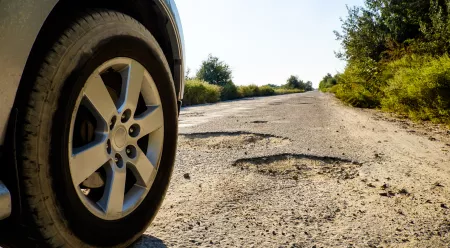How to sell a car in Ontario — An in-depth guide
Here’s our step-by-step guide for selling a vehicle in the province of Ontario:
Get your car ready
Prior to selling a car in Ontario, you need to make sure it's ready for sale. This means cleaning the car inside and out, fixing problems, and ensuring all the necessary documentation is in order.
Start by thoroughly washing your car, including the exterior and interior, and vacuuming the seats and carpets. Remove any personal items from the car, such as CDs, chargers, and other accessories. Also, take your car for a tune-up to ensure that it's in good condition, and repair any damages, such as dents, scratches, or broken lights.
Determine the value of your car
Before selling a used car in Ontario, you need to determine its value. This will give you an idea of how much you can sell it for and help you set a reasonable price.
You can determine the value of your car by checking online listings of similar cars, consulting with a car appraiser, or using online valuation tools such as Canadian Black Book or AutoTrader. It's important to note that the condition of your car, the mileage, and the year of manufacture will all affect its value.
Advertise your car
Once you have determined the value of your car, you can move onto the next step of learning how to sell a car privately in Ontario: advertising. You can advertise your car on online platforms or in traditional classified ads such as newspapers or local magazines.
Be sure to include all the necessary details, such as the make, model, year of manufacture, mileage, and condition of the car. Also, include clear photos of the car, both inside and outside. Lastly, if you’re selling a used car as is in Ontario, make sure that you’ve clearly stated this in your advertisement.
Prepare the necessary documentation
Before you can sell your car, you must have all the necessary documentation. This includes the ownership document, a bill of sale, and the used vehicle information package (UVIP).
The ownership document shows that you are the car's legal owner, while the bill of sale indicates the sale price, date of purchase, and the names of the buyer and seller. The UVIP provides a detailed history of the car, including any accidents or previous repairs.
Conduct a test drive
Once you have found a potential buyer, it's essential to conduct a test drive. This will allow the buyer to test the car's condition and ensure it meets their needs. During the test drive, be sure to accompany the buyer and answer any questions they may have about the car.
Negotiate the price
Once the buyer is interested in the car, they will likely negotiate the price. Be prepared to negotiate, but also be firm on the price you want. Consider the market value of your car and the offers you have received from other potential buyers. If you're having trouble negotiating, consider involving a third party, such as a car appraiser or trusted friend.
Complete the sale
Once you have agreed on the price, it's time to complete the sale. Ensure you have all the necessary documentation and that the buyer has a valid driver's license and insurance. You will need to sign over the ownership document, provide a bill of sale, and hand over the car keys. It's also important to remove the license plates from the car and cancel the insurance.
Be aware of scams
Unfortunately, there are scammers out there who will try to take advantage of sellers. Be wary of buyers who offer to pay more than your asking price or insist on completing the transaction outside of a public place or without the necessary documentation.
You should also be cautious of buyers who ask for personal information or try to pressure you into completing the sale quickly. If you have concerns about a potential buyer, trust your instincts and consider ending the transaction.
Consider trading in your car
If you're uncomfortable selling your car on your own, consider trading it in at a dealership. While you may get less money than you would from a private sale, trading in your car can be a convenient and stress-free way to get rid of it. Do your research beforehand and visit several dealerships to get the best deal.
Stay organized
Throughout the process of selling your car, it's important to stay organized. Keep all the necessary documentation in a safe and easily accessible place, and make notes of any conversations or negotiations with potential buyers. This will help you stay on top of the process and ensure everything runs smoothly.
Save up to 25% when you bundle with a Surex insurance advisor
Are you planning on buying a new car after you sell your old one? If so, you’ll need to update your auto insurance policy. The easiest way to change or update your insurance policy is by contacting your Surex insurance advisor.
If you’re thinking about shopping around for a new policy, you can team up with Surex for that as well. Your personal Surex insurance advisor can help you find and compare the top auto insurance quotes in ten minutes or less.
Contact us today to learn how we can help you save as much as 25% when you bundle your policies with one of our carriers.



